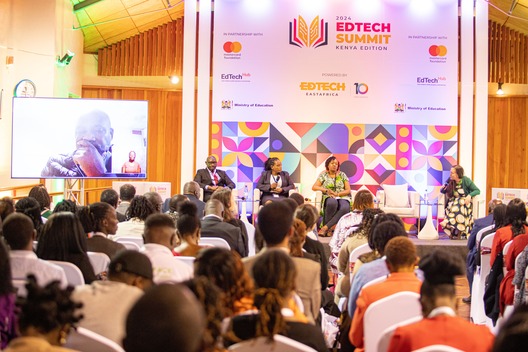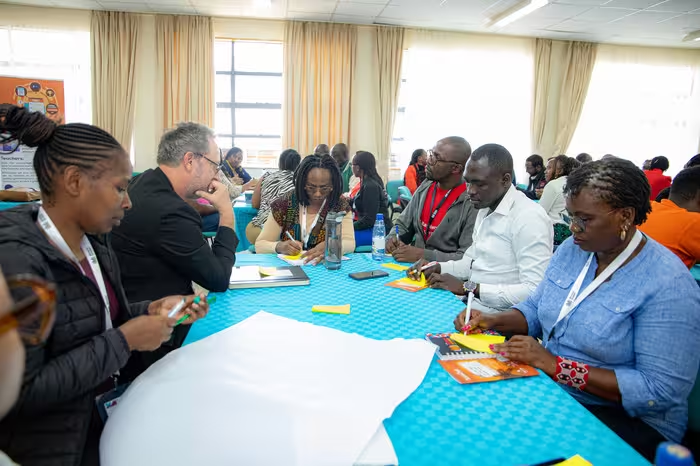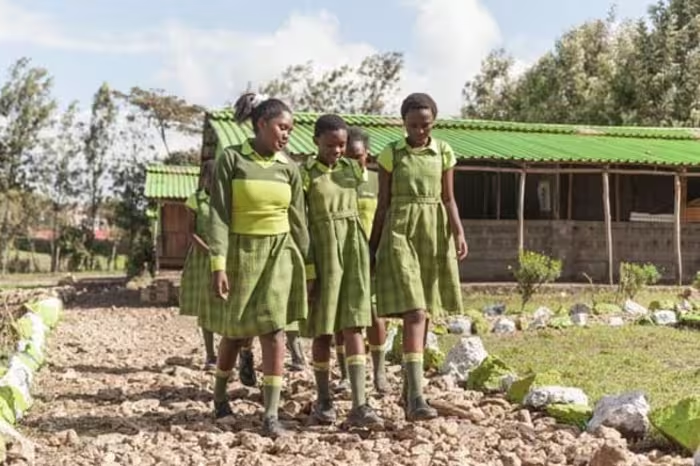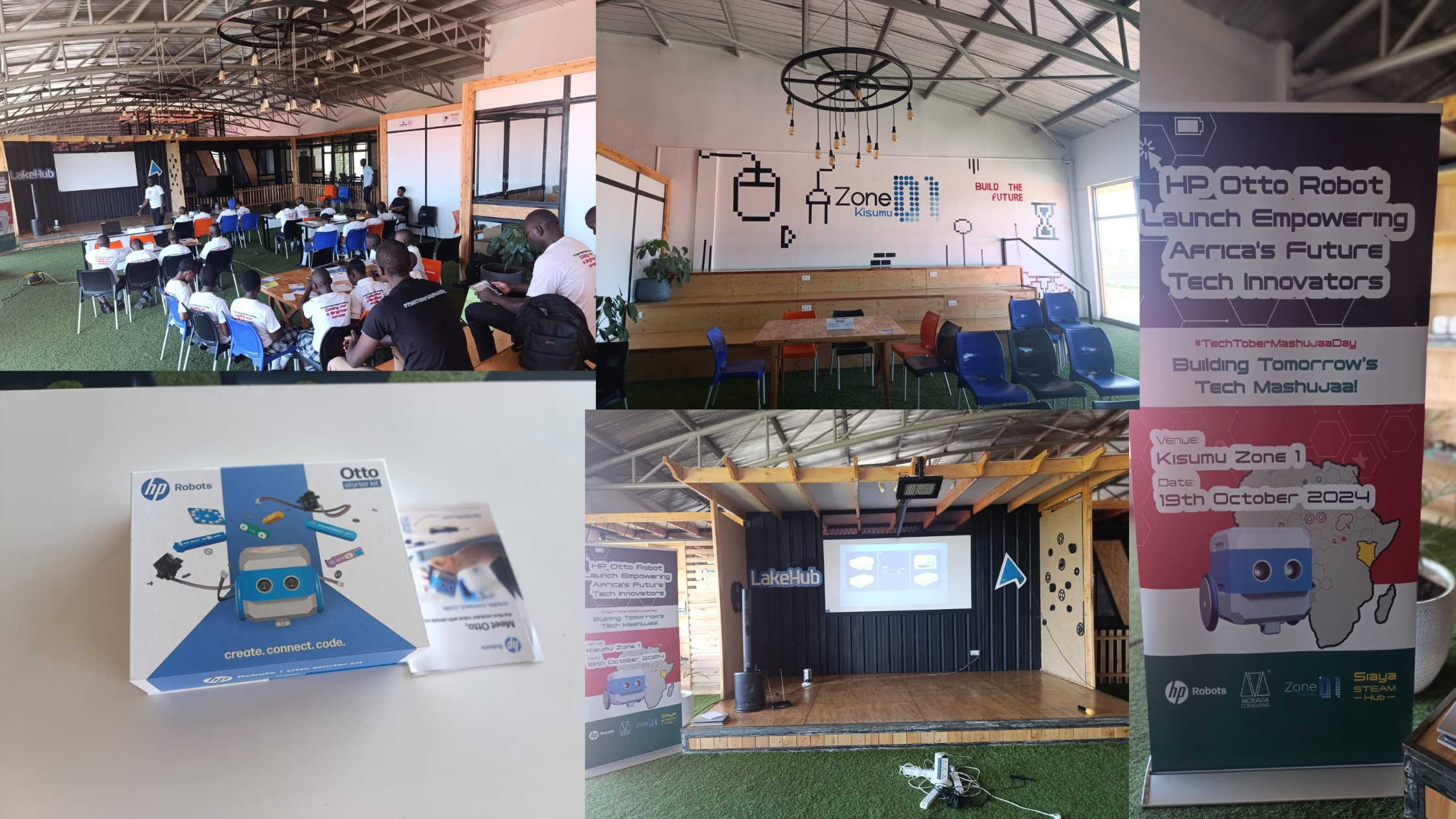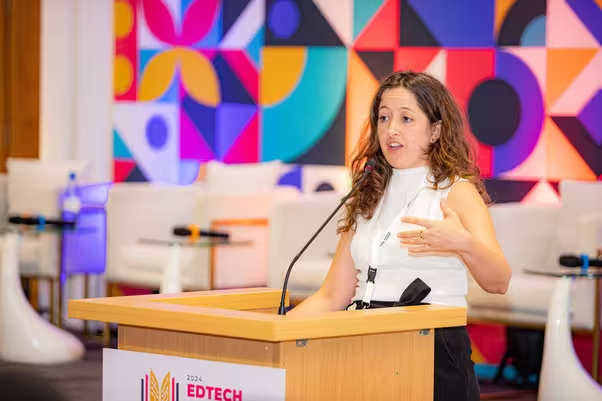
Evidence is the appearance from which inferences may be drawn. It also means ground for belief or obviousness. In the EdTech space, evidence is as important as any other variable needed to make this ecosystem work like a finely tuned Swiss wristwatch.
Evidence was the topic of discussion in the opening panel of the 3rd Kenyan edition of the EdTech Summit. Why is evidence so important? Good question. Because it’s the solid basis for implementing solutions, future paths can be charted and corrective measures can be made. Because, just as in a court case, it’s the basis on which stakeholders can deduce judgments. Because evidence makes players more strategic in their interventions.
The panelists in this session on strengthening EdTech with evidence were Elizabeth Otieno, Ciku Mbugua, Dr. Tiberius Barasa, and Barnabas Sang. Elizabeth is from the Directorate of Basic Primary Education in the Ministry of Education (MoE). Ciku is the co-leader for the EdTech Hub. Dr. Barasa is a policy researcher and analyst. He’s a lecturer at Bomet University College and is on secondment to MoE. Sang is the Director of ICT for the State Department for Basic Education under the MoE.
Director Sang, who was in Italy attending a training about AI in education, joined the panel virtually. He spoke about KEMIS, which will lay the groundwork for a more data-driven, equitable, and accountable education system. (It is yet to be officially called KEMIS, though, because it requires legal duplication). MoE will also explore how these systems will align with the national education sector strategic plan.
Sang stated that they want to improve the efforts of other stakeholders, more precisely target their interventions, and close the gaps that the data reveals.
Data is king
KEMIS is an essential pillar in Kenyan digital transformation and education. This system allows for real-time data collection of student enrollment, attendance, and resources, offering an unprecedented level of visibility into the education landscape. For instance, the platform ensures transparency in the distribution of resources, such as free education. It will also enable the government to allocate resources more efficiently.
Data is not only a mere tool for monitoring progress but is also a critical driver of policy formulation. NEMIS serves as the backbone of collecting accurate and timely data, which informs policy aimed at improving education outcomes. What this unlocks for a researcher or funder is the ability to understand more about the teachers and the learners that you want to serve.
The work that Sang and his team are doing to bring all of these different diverse data sets together will create more insights into what’s actually happening on the ground for learners, teachers, and families across Kenya.
One of the initiatives Sang mentioned is the Education Evidence Hub. It is a way for players in the EdTech space to utilize some of this data, which has much more evidence that’s being generated across diverse EdTech ecosystems.
Education Evidence Hub

“All of you have been sitting here as partners in education; there are interventions that you are undertaking,” Elizabeth threw down the gauntlet. “And if I ask you, what influences your intervention? What is influencing your action? Maybe you heard somebody say it.”
Those are the ills that the Evidence Hub, which is a simple connector between data, wants to cure. It will be a one-stop source of information at MoE, which will generate information on all the questions and challenges in education. For some, MoE is going to find an approach via policy gaps. They will do this by carrying out surveys generating real data and working with universities to generate data.
The Evidence Hub is going to work with all three tech departments and all partners. It is not a property of MoE. It is our system at the education center.
“After we have identified gaps, we are going to collect information from the Ministry of Education,” Elizabeth explained. “We are going to look at the issues around the existing gaps.”
“And I’ll give you an example. There could be a gap in the response to the health issues of children. If you ask parents if they are sure about the safety of their children, they will have different answers. But at the ministry, what is the data that we have? What is the data on sanitation? What is the data on water availability in our schools? What is the evidence?”
ICT will be a tool to help MoE package information, deploy it on numerous servers, and package it so that the general public, educators, education managers, and students can easily consume it.
What’s the end game? To get processes and structures to produce and use data and evidence for policy impact. That’s one. And two is to improve the skills that are administered to help people generate, analyze, and synthesize data and package it purposefully for policy.
Evidence in lecture halls
The proof of the pudding is in the eating. And the proof that evidence is real and grounded in reality can be found on the ground. One such ground is a lecture hall. No one knows this better than Dr. Barasa.
Dr. Barasa witnessed firsthand how COVID-19 forced lecturers and higher learning institutions to change their teaching methodologies.
“Within a short time, nearly eight percent of universities in Kenya started offering their programs online,” Dr. Barasa said. “There was rapid training of lectures to be able to teach using technology. Many lecturers found it very difficult. Some old professors found it torturous to teach online. But they had no option but to do it.”
Bomet University College, where Dr. Barasa plies his trade, teaches all its students ICT. They have adopted blended learning; lecturers need to utilize at least 40% of their time using technology or doing blended learning. Some lecturers have gone a step further and offer their programs up to 60-50% using technology.
“Students seem to love it; they enjoy it; it’s very interactive. And the assessments have shown that as we interact with students or engage them online, they increase their learning ability, and they experience deep learning as opposed to shallow learning.”
Dr. Barasa shared a student’s experience concerning the use of technology and evidence in decision-making.
“From the very beginning, I use engagement methodologies. I engage the students before I start to teach. I ask them about the expectations of the course, and they all write them down and present them. I engage them at every stage of learning in the delivery of the content because I don’t deliver much content. They do it themselves. I also engage them about the assessments.”
Dr. Barasa ensures that every learning activity has student input. He uses simulations and case studies. A student came up to him and confessed that he had never experienced deep learning as much as he had within that course in public policy analysis. The most interesting thing for this student was a real policy scenario and analysis right from the problem identification, decision-making, and evaluation. And for him, he had integrated all the aspects of quality analysis that he required for his life. Upon graduation, this student went ahead to enroll in a Master’s program in public policy at the University of Nairobi.
This just goes to show that the use of technology can improve teaching and learning in universities. Besides, it can also generate important evidence that will inform public policy.
Research gap
In education, if there is one thing that stakeholders can never have enough of, it is research. Without adequate research, which harvests tons of invaluable pieces of evidence, we will not hit our targets. And this is because, without evidence, it is akin to shooting in the dark while blindfolded. Which is a high risk that stakeholders cannot afford to take.
As a nation, we haven’t yet scratched the surface of the 2 percent of what is desired to support research. In the initial stage, we are operating with 0.4 percent of the national budget to support research. It is hoped that in the next budgeting year, the research budget will increase to probably about 0.8 percent.
“The support from the national government concerning finance for research is still meager,” Dr. Barasa said. “And of course, we understand the constraints that the government is going through regarding finances. But we hope that will improve and that allows all interested stakeholders to come in and support our research at the universities.”
Generating evidence through implementation
“As EdTech Hub, we’re in the business of generating evidence,” Ciku stated. “Which is why we’re a key partner at the EdTech Summit. We believe that technology cannot only be accelerated, but we need evidence to be able to scale.”
“Why hasn’t EdTech realized its potential?” an audience member asked.
“There isn’t a lot of evidence out there,” Ciku replied. “There are so many key issues that are under research. However, where evidence is available, it’s hard to find and hard to read.”
EdTech Hub often collaborates with researchers. They generate evidence that makes it into some of the top journals. However, it can be difficult for a layman to read and understand those journal articles. This is why there is a need to find better ways to package evidence based on who researchers are talking to. And the flip side is that it is hard to make good-quality decisions if you don’t have good evidence.
Sandbox
of proving orThe idea of a sandbox, which comes from the tech community budget, involves carving out mini systems within boxes with the purpose of proving or testing our assumptions.
Here’s the thing: there’s a lot of uncertainty at the beginning of implementing edtech solutions. Plus, it is extremely expensive. The best way to go about it is to start in a small way and test your idea before you invest all of your money in something that you’re not sure about. The more the uncertainty decreases, then, as an analyst, you can begin to improve your expenditure or your investment in it.
Edtech exists within a wider ecosystem. You cannot afford to live on an island. Even when in a sandbox, you should think about the bigger picture.
“When we are doing our sandboxes, we use what we call the six keys,” Ciku explained. “What is this product? What is it going to be used for? Who are the people that are going to use it? Do we have provision for it, or will we introduce it into schools and then in six months we have to bow out because we haven’t thought about the cost-effectiveness? What is the place that it is going to be used in?”
Conclusion
Edtech doesn’t operate in isolation. It’s part of a much wider ecosystem. It deals with every facet that surrounds learning. And all these facets revolve around evidence. Which means that we cannot work on assumptions. It is either solid evidence or nothing at all.
Evidence bolsters the work of all stakeholders. It ensures that the entire ecosystem thrives. But for this to happen, the evidence must not only be shared liberally, but ought to be in a language that can be easily chewed and swallowed by all stakeholders, be they the proletariat or university professors.
